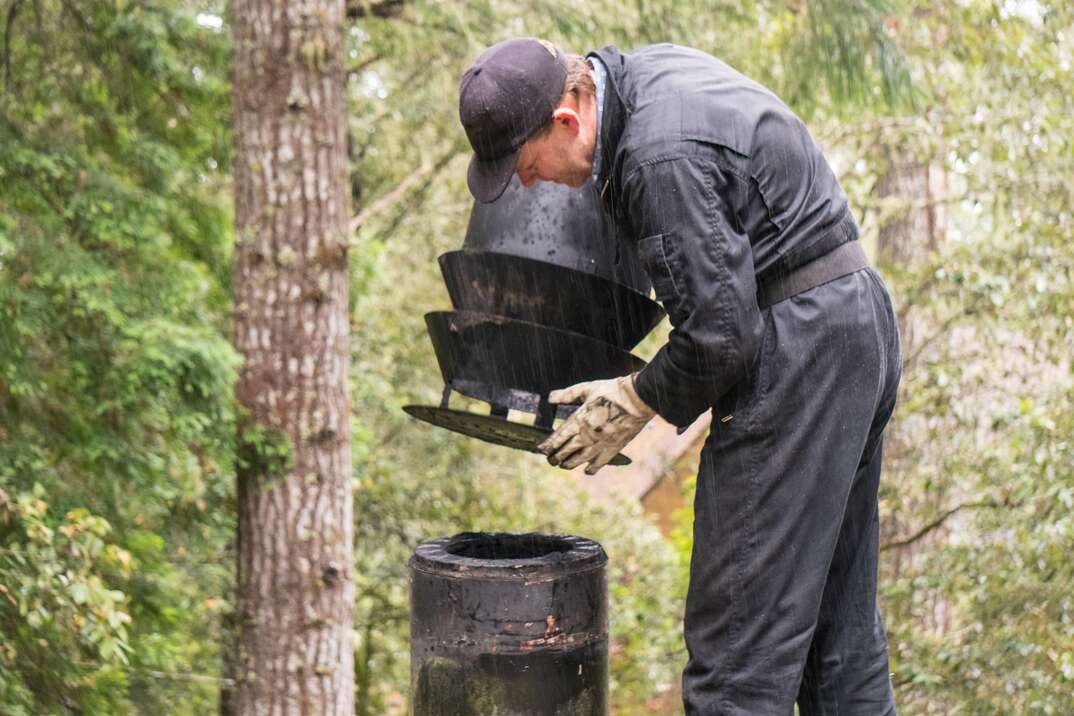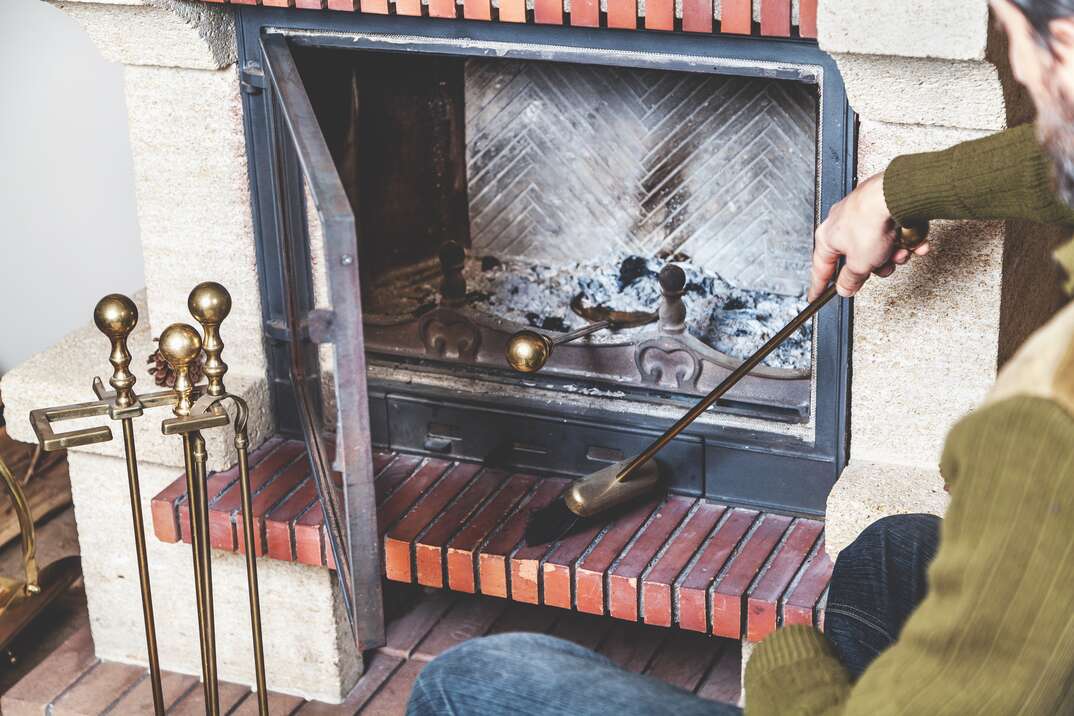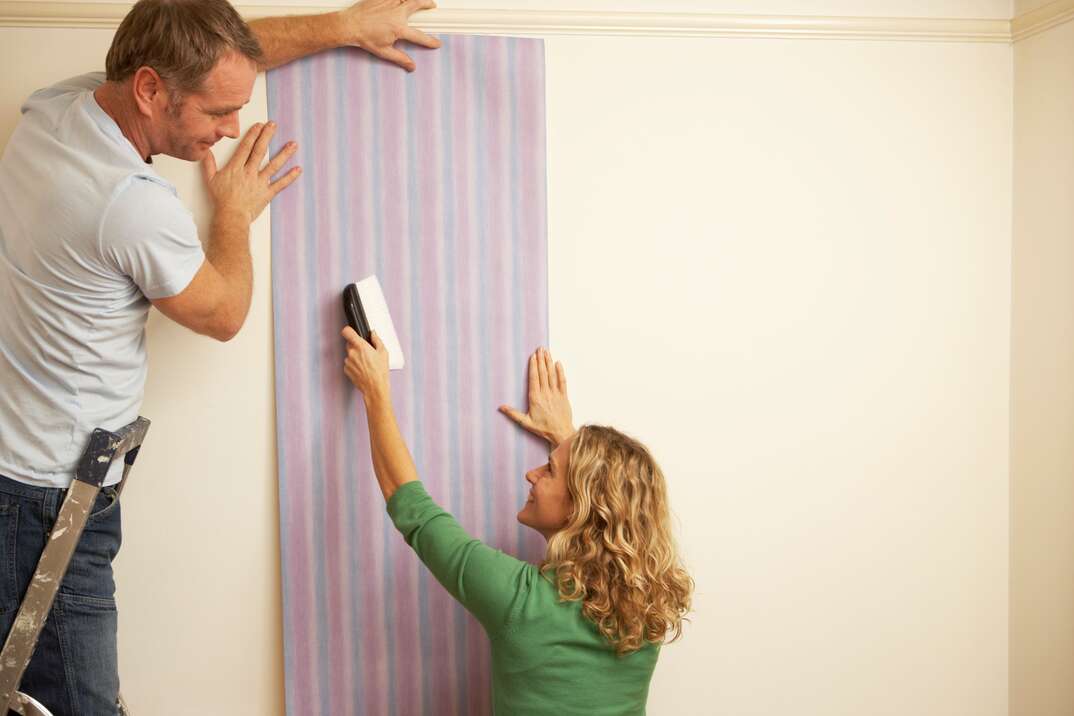Soot Yourself: Channel Your Inner-Dick Van Dyke and be Your Own Chimney Sweep

If you use your fireplace on a regular basis, but just can’t seem to recall the last time you cleaned it, chances are you are overdue for a chimney sweep. Having a clean chimney ensures that you do not have a build-up of creosote.
This May Also Interest You: Heating With a Fireplace: Most Common Questions
Creosote builds up gradually and can become a fire hazard. Estimates show that dangerous accumulations of creosote contribute to an alarming percentage of housefires.
How to Know Your Chimney Needs Cleaning
A quick way to tell if your chimney needs cleaning is to take your fire poker and scrape along the inside of your chimney liner. If you find that you have an eighth of an inch or more of buildup, you need a cleaning. If you’re ambitious and want to tackle the project yourself, go for it. If you think the project is beyond your DIY skill set, call a local chimney sweep.
Cleaning your Chimney Yourself
If this decidedly dirty job doesn’t intimidate you, taking on cleaning your chimney yourself can save you hundreds of dollars annually. You should clean your chimney twice a year, especially before your first fire of the season, and expect to spend two to four hours on it.
Tools and Supplies Needed
- A drop cloth
- Plastic sheeting
- Painter's tape or duct tape
- Protective goggles
- A respirator dust mask
- Chimney brushes
- A ladder
- A shop vacuum
- A flashlight
Step-by-Step Guide
Step 1: Prep Work
Spread out a plastic tarp or even painters drop cloth evenly, protecting the floor surrounding your fireplace. Then, locate your firebox and remove the ash and wood bits that have accumulated there. Once it’s empty, open the damper. Next is a crucial step unless you want a huge cleanup job later: Use some thick plastic sheeting, and tape and seal the front of the fireplace completely. Do not cut corners, here; make sure all the seams are sealed and you have no gaps — or a thin layer of dust could completely cover your furniture and belongings.
Step 2: Equipment Check
Get all your protective gear and supplies together. A nice pair of goggles that form a seal around your eyes is a must, as well as a quality dust mask to protect your lungs. In addition to that, you’ll need a ladder and a few types of chimney brushes.
Step 3: Start Sweepin’
Here’s where the fun begins! Using a sturdy ladder, make your way onto the roof and locate your chimney. Remove any hardware you have obstructing the top of the chimney, like an animal guard or chimney cap. Taking your largest-diameter chimney brush, brush from the top down. Work your way toward the flat area located in the crook behind the damper also known as the smoke shelf. Make sure you have thoroughly cleaned, and take your time; no need to rush any part of the cleaning process. When you have completed sweeping or cleaning the flue, replacing the hardware you removed, making sure it is fastened securely. Then make your way to the ladder and carefully climb down.
Step 4: Back to the Bottom
After you’ve allowed time for the dust you knocked loose from above to settle into the firebox, peel back a small opening in the taped plastic you put up earlier. Using a smaller-diameter brush, reach through this opening and scrub up as far as you can into the chimney. When you’ve finished, re-cover the fireplace and seal everything back up. Allow a period of time for the dust to settle once again.
Step 5: Suck It Up!
Lock your doors — no, seriously, use the deadbolts if you must. Even a light draft from your door can cause a huge mess during this step. Slowly and meticulously peel back the plastic sheeting and the tape that you put over the fireplace. Move the sheeting carefully out of the way and use a shop vacuum to clear the firebox of all debris. You may have to empty your shop vacuum several times, depending on the size and how much debris you’ve cleaned out.
Step 6: Celebrate
Clean up all your materials and start singin’ “Chim Chim Cheree” like Dick Van Dyke in Mary Poppins, because ... Congratulations! You have successfully cleaned your own chimney.

When to Call in the Professionals
Some homeowners know when do-it-yourself projects are out of their comfort zone and they call in the pros before they even get started. Consider consulting an expert if you’re not comfortable with ladders and heights; if it’s been years since your chimney has been cleaned and you’re unsure if it’s safe to use; or if you have odors coming from your fireplace, or smoke coming into your house.
Cost of a Professional Chimney Sweep
The average cost of a chimney sweep nationwide is $244. The typical cleaning costs between $128 and $363. If you have a wood fireplace that receives regular maintenance, you could look at spending $84 to $100 per cleaning. If you have waited a few years and neglected cleaning your fireplace, you could be looking at a steeper bill — possibly $800 or more.
Creosote Buildup
Creosote buildup might not look dangerous to the untrained eye, but it is. Once ignited, it can expand like foam sealant and, in less than a minute, build to more than 2,000-degrees Fahrenheit. It can quickly engulf your entire chimney and destroy your home.
If your creosote buildup is thicker than an eighth of an inch or dark in color, consider calling in a professional chimney sweep to clean yours, as it could require the use of special tools and chemicals that most homeowners don't have access to.
How to Make Sure your Chimney is Safe
The best way to make sure your chimney is safe is to visually inspect it before the burning season. You’ll want to look for several things, inside and out, using this checklist:
Outside Your Home
- Examine the chimney to make sure a chimney cap is present and in good condition.
- Make sure no bird's nest or buildup are on the cap.
- Ensure no tree limbs are near the chimney.
- Verify that the mortar is not chipping or crumbling.
- The chimney must rise at least two feet from the roof.
- The chimney crown should be beveled to help with airflow.
- The flue liner should be visible.
- The chimney should be stable and not leaning.
- The roof flashing should be tight against the chimney.
- Should you find anything that needs repairing, call a licensed chimney professional or a mason to fix the problem.
Inside Your Home
- Using a flashlight, inspect the damper and make sure it opens, closes and seals properly
- While the damper is open, check the flue for bird's nests or debris; you should be able to see daylight with the damper open.
- Inspect the fireplace surround, hearth and firebox, making sure no bricks are cracked or mortar missing.
- Check for obvious signs of moisture inside the firebox.
- Should you find anything that needs repairing, call in a licensed chimney professional.
Additional Tips
Chances are, you’re not eager to climb on the roof and clean the chimney (or pony up for a pro) again anytime soon. To extend the use of your fireplace and slow the accumulation of creosote, use only properly split and seasoned firewood.
Slow, smoky and smoldering fires also create creosote quickly. To avoid these types of fires, always make sure you have adequate air for the fire. Your goal is to have a hot, clean-burning fire that generates less creosote and keeps you off the roof longer.
More Related Articles:
Frequently Asked Questions
Whether you’re a new or longtime homeowner, the chimney can often be a mysterious black hole reaching to the unknown. But you needn’t ponder its mysteries any longer — we have compiled a list of frequently asked questions to demystify it for you.
How Often Should I Clean My Chimney?
At least twice a year. The first time should be before you start using your chimney for the season and the second time should be after the peak of the heating season, when you won't be using it as much.
Is It OK to Sleep With the Fireplace Burning?
No. Never leave your burning fireplace unattended. It’s extremely important to extinguish a fire before heading to bed or leaving the house. It’s also imperative that you allow the ashes to cool completely before disposing of them. So, if you have a late-evening fire, let the ashes cool overnight and dispose of them the next morning.
Should You Close the Glass Doors on Your Fireplace?
The doors on your fireplace should either be fully opened or fully closed — never partially open. When your fire is burning bright and strong, you want to leave the doors open. When you notice the fire is dying down, you should close the doors to minimize the amount of room air entering the chimney.
Does the Fireplace Make Your House Smell Like Smoke?
If you’re experiencing a smoke smell in your house, it could be a sign of trouble. The smoke smell or odor is from creosote. If the smell is strong, you need to clean your chimney, or have it cleaned.
Lots of homeowners love to do projects around the home, but should you find yourself in over your head, don’t be afraid to call in the professionals. A HomeServe repair plan can save you money and stress when the unexpected happens.


